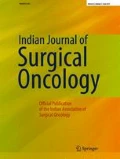COVID-19 is spreading exponentially worldwide, with the infections scaling 9.2 million and resulting in 0.47 million deaths as of June 24, 2020. Meanwhile, in India, there were above 0.45 million infections and more than 14,000 deaths, with a rising trend crossing 14,000 infections per day. Although the number of infections was much low in Kerala (our region of practice) then, the current daily surge has now reached the national highest, and the test positivity rate has crossed the national average. As of October 15, 2020, the world figures have reached the 38.7 million mark, with death crossing 1.1 million, and in India, the statistics are a total of above 7.3 million and 0.1 million deaths with a daily surge of more than 67,000 cases. However, in Kerala, the death rate remains far below the national average, i.e., 0.3% against 1.53% (https://edition.cnn.com/interactive/2020/health/coronavirus-maps-and-cases/, https://www.worldometers.info/coronavirus/country/india/).
We have systematically commented on the adaptive mechanisms of our head and Neck practice in a tertiary cancer care centre in southern India [1,2,3,4]. In a recent advisory by the Central Government, it has been suggested that all ENT-head and neck endoscopies need to be performed with level 2 PPE kit consisting of coverall gown, N-95 masks, gloves, and goggles [5].
Our institution being located in a relatively low endemic zone, very few of our patients waiting for surgery have tested positive for COVID-19 so far. Besides the adherence to the State and Central Government regulatory, all endoscopy and allied procedures have been subjected to an additional layer of protection employing improvisations carried out with the help of manpower from one of our projects on device development. Fiberoptic endoscopy is performed with the patient placed in a modified operating table with PVC frames over which transparent drapes are kept with a punched hole of 5-mm diameter which just allows the fibre-optic scope to pass through (Fig. 1) from the top surface. The patient wears a modified face mask that has an improvised opening for letting in the scope with a modified trochar and cannula type of entry and this can be guided by the assistants’ hands which enter the enclosure through the side by gently lifting the free edge of the drape.
For manipulations on tracheostomas, like voice prosthesis or tracheostomy tube changing, we have been using a transparent pliable neck shield anchored around the lower jaw to curb aerosol dissemination (Fig. 2) without interfering hand dexterity of the clinician.
Suitably improvised transparent drapes are also used in our operating rooms to contain aerosol dissemination during other AGPs such as intubations and bone drillings during head and neck surgeries.
For selected office rigid telescopic and fibre-optic evaluations of head and neck cancer patients, we use transparent curtains with improvised ports to insert both hands of the examiner. These precautions in the backdrop of three-step (gate security-trained health care team-medical practitioner) screening practiced at our institute have gone a long way in ensuring the safety of caregivers in our facility.
References
Varghese BT (2020) Covid19 pandemic; A practicing head and neck surgeon's perspective of an institutional model. Oral Oncol 106:104765
Varghese BT (2020) The Kerala model of health care delivery and its impact on oral cancer care during the COVID 19 pandemic. Oral Oncol 106:104769
George CK, Varghese BT, Divya GM, Janardhan D, Thomas S (2020) Emergency tracheostomy during COVID 19 pandemic in a head and neck surgical oncology unit [published online ahead of print, 2020 May 8]. Oral Oncol 107:104784
Varghese BT Tracheostomy care during COVID 19 pandemic in a head and neck oncology unit [published online ahead of print, 2020 May 19]. Oral Oncol 2020, 107:104810
www.mohfw.gov.in › pdf › ENTCOVID0306
Acknowledgements
Kerala state council for science technology and environment (KSCSTE) and head and neck disease management team Regional Cancer Centre Thiruvananthapuram, Kerala, India.
Author information
Authors and Affiliations
Corresponding author
Additional information
Publisher’s Note
Springer Nature remains neutral with regard to jurisdictional claims in published maps and institutional affiliations.
Highlights
Cumulative benefits of three-step screening modified masks and improvised aerosol shields in endoscopy.
Rights and permissions
About this article
Cite this article
Varghese, B.T., Akhil Upper Aerodigestive Tract Endoscopy During COVID-19. Indian J Surg Oncol 12 (Suppl 2), 306–307 (2021). https://doi.org/10.1007/s13193-021-01307-7
Received:
Accepted:
Published:
Issue Date:
DOI: https://doi.org/10.1007/s13193-021-01307-7



